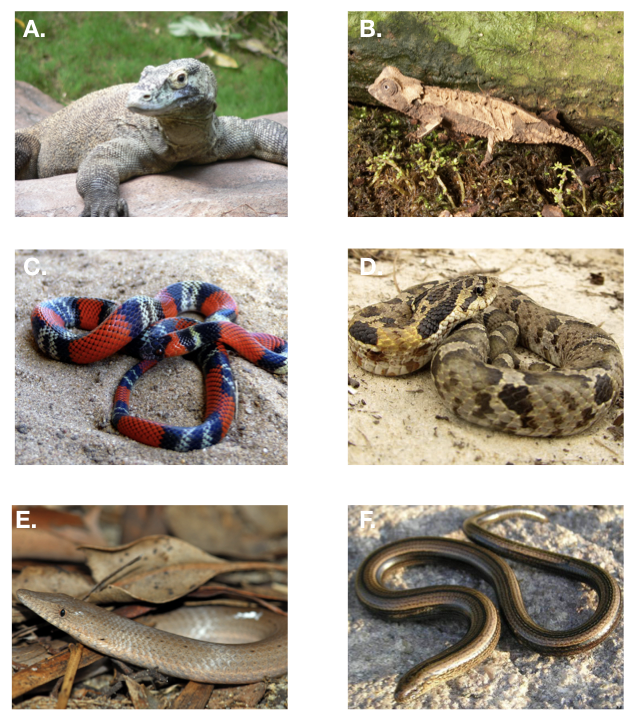7.1: Limblessness as a discrete trait
- Page ID
- 21619
R markdown to recreate analyses
Squamates, the clade that includes all living species of lizards, are well known for their diversity. From the gigantic Komodo dragon of Indonesia (Figure 7.1A, Varanus komodoensis) to tiny leaf chameleons of Madagascar (Figure 7.1B, Brookesia), squamates span an impressive range of form and ecological niche use (Vitt et al. 2003; Pianka et al. 2017). Even the snakes (Figure 7.1C and D), extraordinarily diverse in their own right (~3,500 species), are actually a clade that is nested within squamates (Streicher and Wiens 2017). The squamate lineage that is ancestral to snakes became limbless about 170 million years ago (see Hedges et al. 2006) – and also underwent a suite of changes to their head shape, digestive tract, and other traits associated with their limbless lifestyle. In other words, snakes are lizards – highly modified lizards, but lizards nonetheless. And snakes are not the only limbless lineage of squamates. In fact, lineages within squamates have lost their limbs over and over again through their history (e.g. Figure 7.1E and F), with some estimates that squamates have lost their limbs at least 26 times in the past 240 million years (Brandley et al. 2008).

Limblessness is an example of a discrete trait – a trait that can occupy one of a set of distinct character states. Analyzing the evolution of discrete traits requires a different modeling approach than what we used for continuous traits. In this chapter, I will discuss the Mk model (Lewis 2001), which is a general approach to modeling the evolution of discrete traits on trees. Fitting this model to comparative data will help us understand the evolution of traits like limblessness where species can be placed into one of a number of discrete character states.


